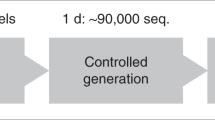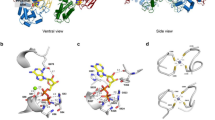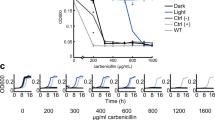Abstract
ACTINOMYCIN D is a potent inhibitor of RNA synthesis both in vitro and in vivo1,2. Its mode of action involves the intercalation with DNA at G-C regions and prevention of polymerase movement along the template3,4. Actinomycin D has also been shown to inhibit DNA synthesis, cell division and colony formation in mouse L cells5. We have studied the effects of this drug on the DNA of human KB cells in culture. Extensive DNA breakage was induced even at quite low concentrations of the drug.
This is a preview of subscription content, access via your institution
Access options
Subscribe to this journal
Receive 51 print issues and online access
$199.00 per year
only $3.90 per issue
Buy this article
- Purchase on SpringerLink
- Instant access to full article PDF
Prices may be subject to local taxes which are calculated during checkout
Similar content being viewed by others
References
Reich, E., and Goldberg, I. H., Proc. Nucleic Acid. Res., 3, 183–234 (1964).
Perry, R. P., and Kelley, D. E., J. Cell Physiol., 76, 127–139 (1970).
Sobell, H. M., Proc. Nucleic Acid. Res., 13, 153–190 (1973).
Richardson, J. P., J. molec. Biol., 21, 83–114 (1966).
Bacchetti, S., and Whitmore, G. F., Biophys. J., 9, 1427–1445 (1969).
Paleic, B., and Skarsgard, L. D., Int. J. Radiat. Biol., 21, 535–544 (1972).
Muller, W., and Crothers, D. M., J. molec. Biol., 35, 251–290 (1968).
Kresten, W., Keresten, H., and Szybalski, W., Biochemistry, 5, 236–244 (1966).
Waring, M., J. molec. Biol., 54, 247–279 (1970).
Elkind, M. M., Int. J. Radiat. Biol., 22, 313–324 (1972).
Goldstein, E. S., and Penman, S. J., J. molec. Biol., 80. 243–254 (1973).
Author information
Authors and Affiliations
Rights and permissions
About this article
Cite this article
PATER, M., MAK, S. Actinomycin D-induced breakage of human KB cell DNA. Nature 250, 786–788 (1974). https://doi.org/10.1038/250786a0
Received:
Revised:
Issue date:
DOI: https://doi.org/10.1038/250786a0



